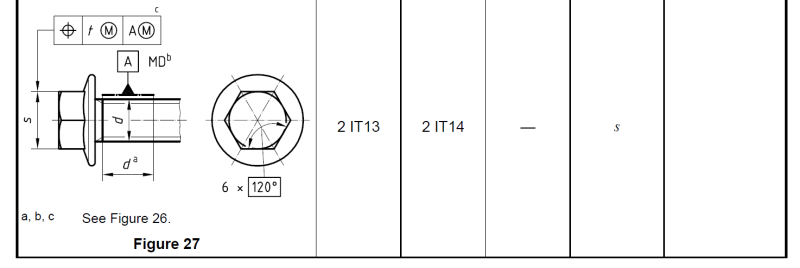SeasonLee
Mechanical
- Sep 15, 2008
- 918
Please ref to the symmetrical callout on the figure attached, its an ISO standard of a M14X1.5 Hex Flange Bolt. What's the meaning of T/2 on the FCF tolerance compartment?
Thanks for all helps
Season
Thanks for all helps
Season



![[smile] [smile] [smile]](/data/assets/smilies/smile.gif)